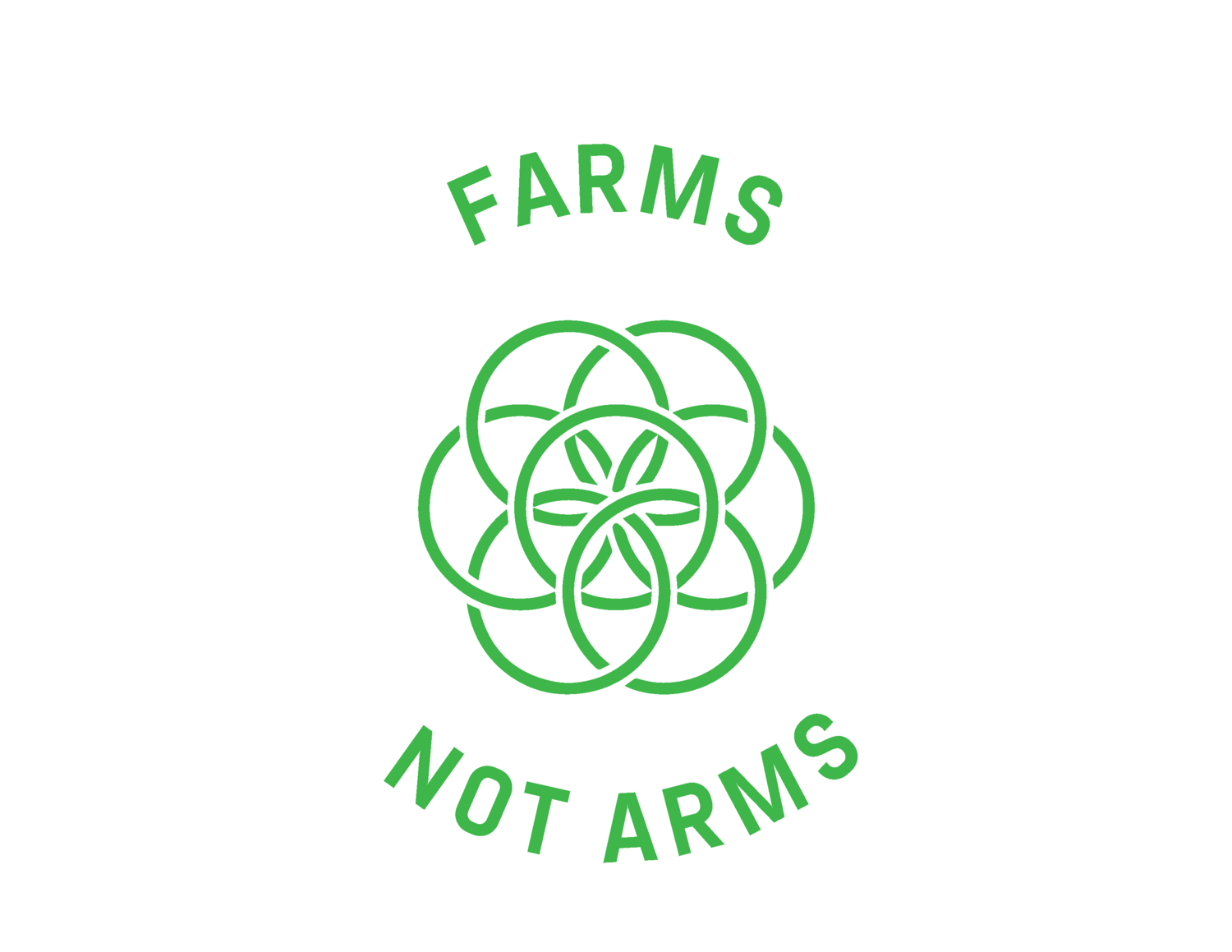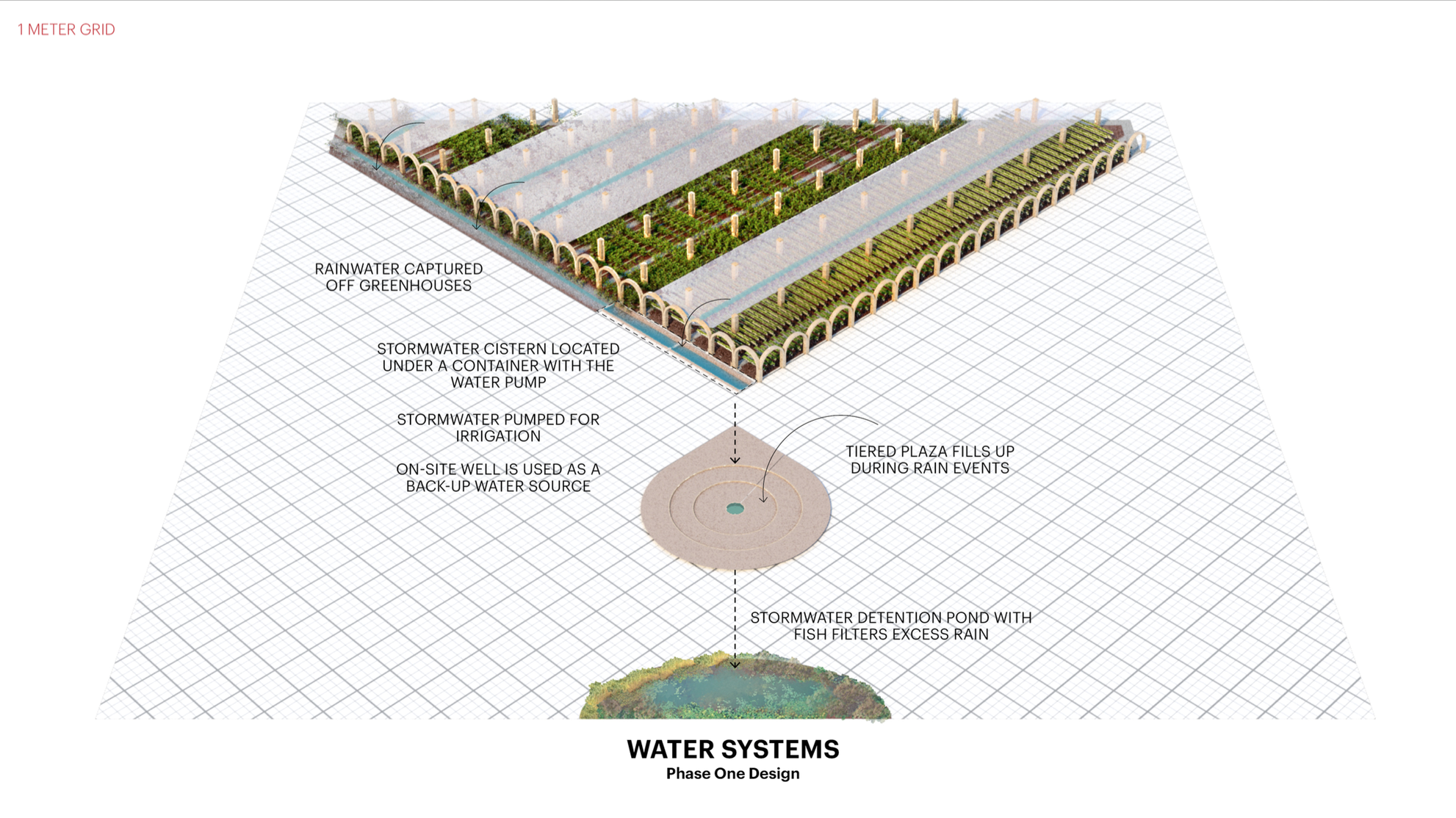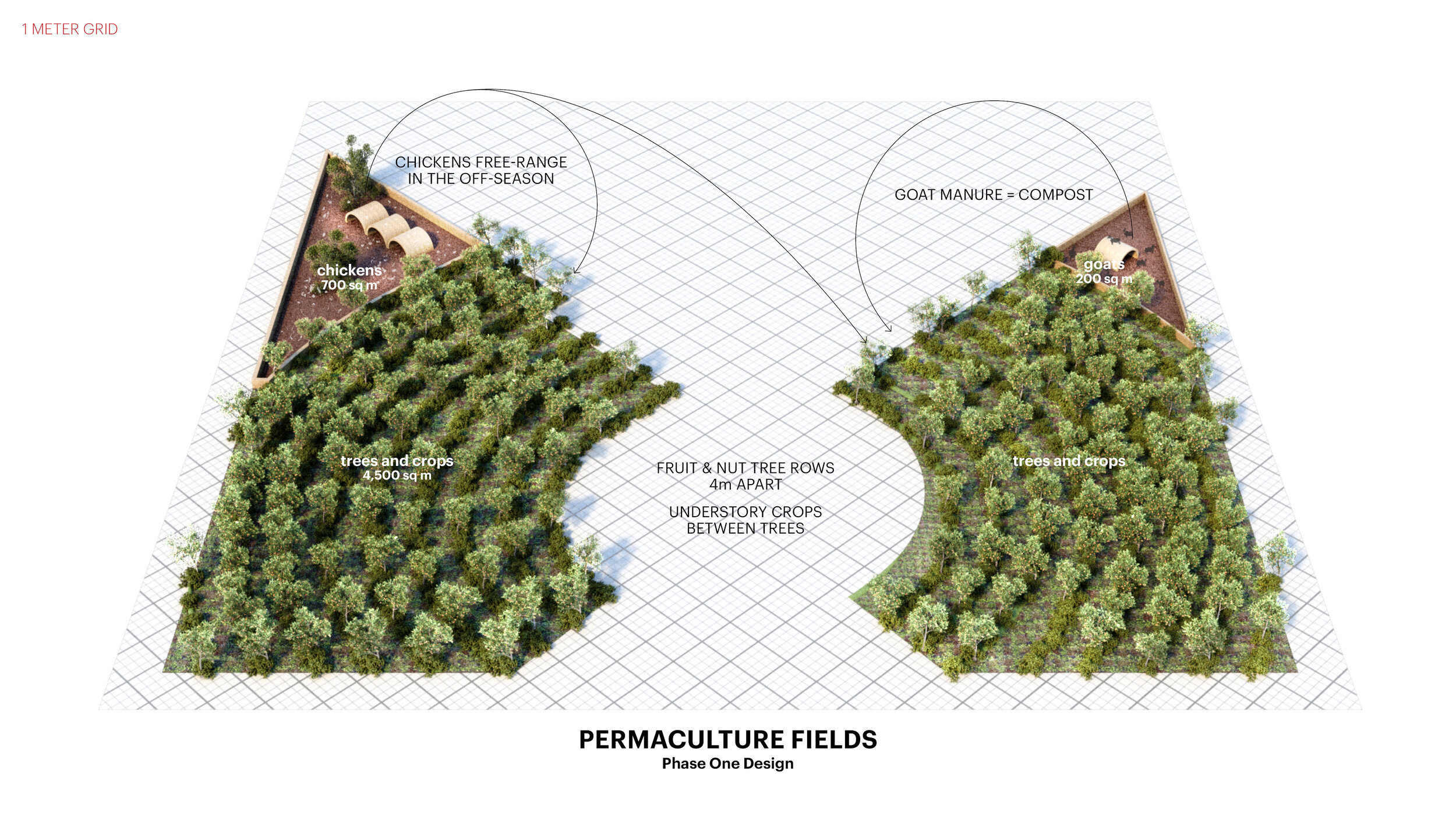Farm Design MODEL
In our farm design, our aim was to create a highly functional model that incorporates the old and new to maximize nutritious food security in a small space while easing climate change. To do so, we are combining different agricultural methods in a closed-loop system that minimizes waste outputs and is regenerative by design. We see our model as a kit of parts that was formulated in a non-site specific way so that it can be easily adapted to different areas, both in Lebanon and beyond.
The farm is organized into three main zones:
the community building: for gatherings, education, and rooftop food production
greenhouses: where we employ vertical farming and low-tech hydroponic techniques
permaculture fields: using agroforestry, regenerative agriculture, and polycropping.
The building serves as a figurative and literal path for food production and education. In doing so, the building defines a central community gathering courtyard. At the center of the entire project is a circle of olive trees around a reflection pool. The olive branch symbolizes peace. Through community, we build farms not arms.
Farm Model COMPONENTS
In the Beqaa, we used simple materials that are accessible to refugees and low-income communities and refurbished two containers that will be used for transporting materials into the community center’s main structure that will be covered by Earth bricks. We incorporated local traditional design like brick arches and are using earth as our built material as people both in the Bekaa and in Syria have a long history of using earth and pressing clay-rich soil into uniform bricks to make long-lasting structures (the oldest earth brick wall found in Lebanon stemming from 5000 BC). In doing so, we’ve created a regenerative and biodegradable design while also adding another avenue for employment for the local and refugee community.
In addition to the elements highlighted above, there are other design principles that support our integrated model for regenerative food production:
Water management is an integral function of our farm’s design, as water scarcity and pollution are key problems in Lebanon. We aim to be as water efficient and recirculate a lot of the water that comes to our farm. We funnel excess rainwater from the greenhouses into long-term water storage under the shipping containers’ storage units. Through low-tech metal wire and plaster, we cost effectively store large amounts of stormwater. This reduces the impact of irrigation on the aquifer. Once the reserves are full, excess water drains into a large open air detention pond. This pond not only serves as overflow storage but also as a small wetland, fish pond, and entry feature for visitors. A reflection pool is at the center of the community courtyard, representing that water is at the center of all life.
Our regenerative techniques also enhance the ability of our soil to absorb water, slowly turning the soil back into a water reserve for the farm.
Rooftop gardens are incorporated on the rooftops of our community center building. Herbs and flowers grow on top of the septic field that will be replaced by a biodigestor later. In this way, we maximize the productivity of the farm on the site. No space is left unused- not even the roofs. The building slopes to the ground, providing a seating and easy access for farmers tending to the roof gardens. The building is built through a series of barrel vaults, providing deep pockets of soil for a variety of plant root needs.
Low-tech hydroponics are cultivating leafy greens on three levels to optimize yield and growing vines in single-level hydroponic greenhouses for season extension of key crops. Our hydroponics system is made out of low-cost PVC pipes and are facing southwest to create optimal wind ventilation from the valley’s shape.
Multi-purpose community center: The building provides a food processing and education loop around the central courtyard. It moves clockwise to accommodate the different stages of food processing and counter-clockwise as an education center, but at the same time is modular to ensure flexibility and multi-use of the space.
“Given that our aim is to grow food in a way that heals the soil while maximizing nutrition, we employed different agriculture techniques to achieve this.”
— Jehane Akiki
FNA Regenerative Farming Techniques
agroforestry: We are utilizing agroforestry techniques to cultivate fruit and nut trees. We plant these trees to mimic the diversity that is found in nature, especially as we increase wild heirloom species on our farms. We are also going to create a ribbon of native tree species as a buffer to clear out pollution and contribute to afforestation and building up new food forests.
multi-level tree intercropping: We are growing many plants on different levels to let plants work together synergistically in order to strengthen the soil. This is maximizing space and feeding more people with less space, and increasing nutrients and calories from fresh, natural local food. Our goal with the farm design is to diversify, grow all types of plants and food to cover a person’s dietary needs and enrich the soil. This launches the virtuous cycle of regeneration, and accelerating the improvement of people’s and soil’s health together.
3. cover crops: One of our chief principles is that the soil should never be kept bare. When it is not being cultivated with vegetable crops, other crops such as alfalfa, beans, oats, wheat, peas and more can be grown instead to provide soil with nutrients, fix nitrogen, prevent soil erosion, and act as a cover from harsh winters.
4. crop rotation: Each crop supplies the soil with different nutrients. Having the same crop grown in the same place time and time again depletes the soil on the long run as it robs it from other nutrients that different plants can supply. To prevent this from happening, we rotate where we plant different crops in our fields to ensure that no same crop is being planted in the same place consecutively.
5. silvopasture: In our farm model, we aim to integrate animals in a holistic manner that benefits them and the land. With smart integration of animals, we can improve the nutrient content of soil with animal herding rotations to use their manure as natural fertilizer. As our farm grows, we hope to add chickens and goats first as well as more animals in subsequent years. In the off-season during the winter, free-ranging chicken can provide nutrients to the soil as they roam around. Goats help trim weeds and unwanted plants and their manure is used for soil amendment.
Our MODEL IN PRACTICE: TURBA FARM, BEQAA, LEBANON
We put our farm model into practice by building Turba Farm in the Beqaa Valley in Lebanon.
25% of the Lebanese residing population are Syrian war refugees. Our mission started with the goal of helping locals and refugees work together and utilize the abundant promises of agriculture to create opportunity, security, and solidarity.







